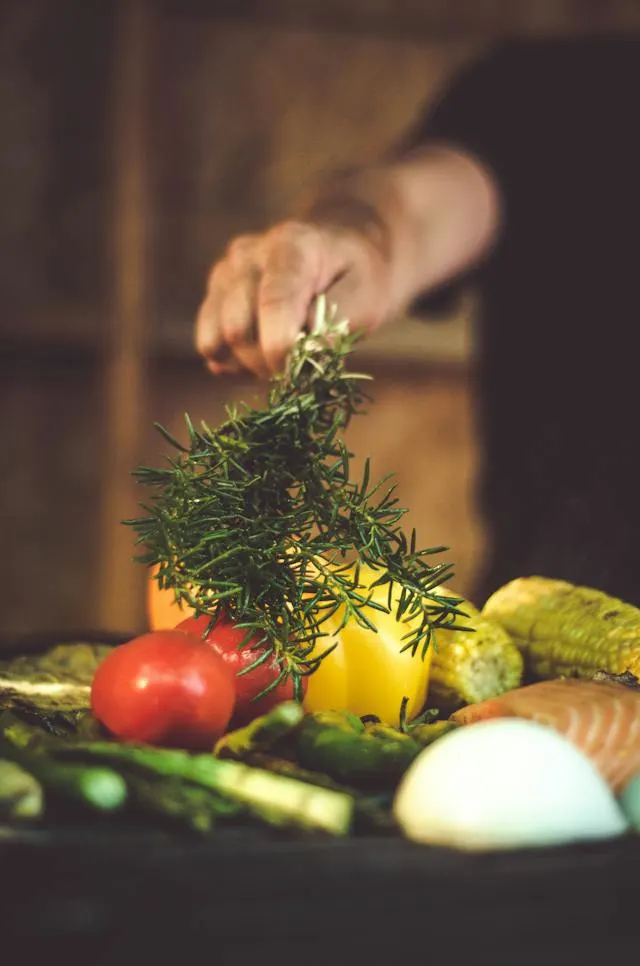This post may contain affiliate links. I only recommend products I use and love. Read the full disclosure here
Last Updated on February 12, 2024 by Alaina
Rosemary features a combination of blue-purple flowers and dark green foliage, which is ideal for a holiday topiary or a fragrant garden hedge. But it isn’t grown just for aesthetic qualities alone. The piney, savory taste can elevate the flavor of a variety of foods, so growing rosemary can make a big difference in the kitchen.
Whether growing it outdoors or as part of an indoor herb garden, here’s everything to know about developing a rosemary plant, including rosemary varieties and plant care.

How to Plant Rosemary
Rosemary is a perennial, so you need to decide on a long-term location with sufficient sunlight. You also need to prepare for weed control and prepare the soil well. Plan and choose a variety up to 6 feet tall or a cascading or mounding shape that works with your growing space.
Growing from Seed
As germination takes months and has a low success rate, rosemary isn’t often grown from seed. So while you may be tempted by the challenge, you’d be well advised to instead start from a cutting.
Growing Rosemary from a Starter or a Cutting
Growing rosemary from a cutting is rather simple. You can use an existing plant that you have a particular liking for to grow rosemary from. In the spring, take a cutting of 3 inches, where there’s new, soft growth. Remove the leaves from the lower half of the stem, with half a dozen remaining at the top.
Gently place the stem into the potting soil and make sure to water thoroughly. Position the cutting in a window that’s bright and not too hot, and keep it moist for around eight weeks. When new growth appears on the stem, it means that roots are growing in the soil and it’s the right time to transplant.
Transplanting
before transplanting the rosemary cutting, clear debris and stones from your planting space and add four to six inches of compost. Work it into the soil and create a mound for each of your plants for good drainage. Next, dig a hole as deep as the root ball and twice as wide. Finally, plant, water, and mulch.
Growing Rosemary in Containers
Once you’ve transferred the plant to a larger-sized pot and new growing medium, pinch off soft growth and even up the branches. You’ll also want to shape your plant as it grows. Another thing you can do is to provide the plant with nitrogen-rich fertilizer.
Rosemary Plant Care
A rosemary plant is a woody, low-maintenance perennial that can live for a long time if you protect it from freezing temperatures, thin it occasionally, and water it regularly.
Light, Humidity, and Temperature
As rosemary is from the Mediterranean, it needs a full day of warm weather and sunshine. Outdoors, the plant can easily adapt to wet, dry, cool, or hot weather. Indoors, however, it can turn brown and become dry. Place the pot on a tray filled with water and pebbles to maintain humidity and give your rosemary a cool but sunny location.
Soil, Water, and Nutrients
Rosemary loves well-drained soil, as too much water can result in rooting roots or a tough-looking, very wooden plant. You also don’t need to provide it with a small amount of extra nutrition. However, you’ll help it add new vegetative growth if you give it an all-purpose food with a regular supply of nitrogen.
Harvesting, Storing, and Preserving Rosemary
You’ll want to cut rosemary for cooking as needed. If you decide to harvest a bunch of cuttings at the same time, prune strategically to enhance growth and air circulation, then allow new shoots to be filled in before you harvest again.
You can use rosemary fresh (you can keep it in the fridge for up to seven days), dried, frozen, or frozen in oil. To dry rosemary, hang small bunches upside down to dry it and remove the leaves before storing them in a glass jar.

Varieties of Rosemary
Some varieties of rosemary have a stronger-smelling aromatic compound mix, which includes pinene, a smelling type of terpene found in plants such as pine trees. The flatter, broader leaves appear to have more culinary balance and less pine flavor, compared with those that have a manly decorative feel.
- Irene is a cascading rosemary that provides numerous flowers and is resistant to drought.
- Arp has light blue flowers and is also resistant to drought. It grows upright with straight branches that can be used for barbecue skewers.
- Tuscan Blue grows upright and bushy with dark leaves and withstands hot weather.
You have many choices when it comes to sprinkling herbs and spices into your recipes, such as rosemary, or by growing Turkish oregano or other less common but equally delicious herbs. By growing your own herbs, you can have more control over your cooking and take more pride in your cooking than ever before.
